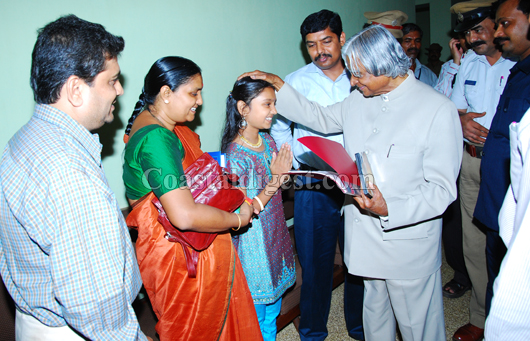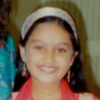Can a great personality remember a little promise given to a small child even after 5 years?!!
Yes! A great personality has kept his word even after 5 years. When these days the so called great personalities cannot remember their promises the very next day, in who can you expect such greatness?

Yes! It’s the perfect guess! He is none other than our beloved one and only Honorable Dr A.P.J Abdul Kalamji.
I was always told about Honorable Dr Abdul Kalamji by my parents & I was thinking how great it would have been if I can meet him once in my life. But I knew it is almost equivalent to meeting God for me & is a mission impossible.
When I was 6 years old, I had sent a VCD of my dance performances which was choreographed by me for 2 Kannada poems written by great Kannada poets D R Bendre & Chennavira Kanavi during the occasion of Suvarna Karnataka Rajyotsava to Dr Abdul Kalam Chacha.
5 Years ago, on one fine morning of November, I received a post in my name. I was very curious to know who has sent me this first postal letter of my life & my excitement had no limits when I came to know that letter was from the Rastrapathi Bhavan. My father unfolded the letter and read “Dear Tanvi, thank for your letter sending there with the CD of your dance performances. My best wishes to you. May God bless you.
- A.P.J. Abdul Kalam”
It was one of the most pleasant surprises of my life that I had got a reply from Chacha. I was jumping in excitement and happiness.
I was 6 and half years & had to go to Delhi to take part in a national level dance competition when I had sent a letter mentioning about our couple of days’ stay in Delhi and my request to meet Kalam Chacha.
Next day when we came back after visiting some places in Delhi city like Jantar Mantar etc., we came to know that Chacha’s secretary from Rashtrapathi Bhavan had called to our house in Delhi to inform that ‘since the President is busy with the tsunami emergency meetings, he cannot meet me and also that the President promises to meet me whenever he comes to Mangalore next..’
After 5 years, during February 2009, I came to know that Chacha will be visiting Mangalore. I was very happy but never expected a call! On February 25th 2009, my papa got a call from his Secretariat that Kalam Chacha was going to meet me personally at the Mangalore Circuit House at 9 pm. I had to pinch myself to ensure that I was not dreaming!
At the Circuit House when we (my parents and me) were waiting for Chacha, I was nervous but as soon as I saw Chacha exactly at 9 pm my nervousness turned into happiness. Chacha patiently listened to my small achievements. “Oh, it was your Arangetram?” he asked with his shining eyes. With great interest he saw my Bharathnatyam Arangetram album. He asked some questions about navarasas ( expressions) as he came to know that I was good at it .Later when I presented him my Arangetram VCD, he took it from me smiling with affection and placed his hands on my head saying that he will watch the CD in full when I was trying to control my tears of happiness. Thus God himself made the mission impossible happen for me.
After a few days I received a letter from him that he has watched my VCD He appreciated my little wings of effort and wrote “I saw the CD and you have performed well. You have to keep up the tempo of learning & build creativity & your own style”. This made my decision of working sincere & hard in my own way to make ‘Chacha’s Dream 2020’ come true firm in my soul.

The author is a Class VII student of St Agnes Eng Higher Primary School, Mangalore. Tanvi has profound interest in classical dance forms, with Bharatanatyam as her forte.






Comments
Add new comment